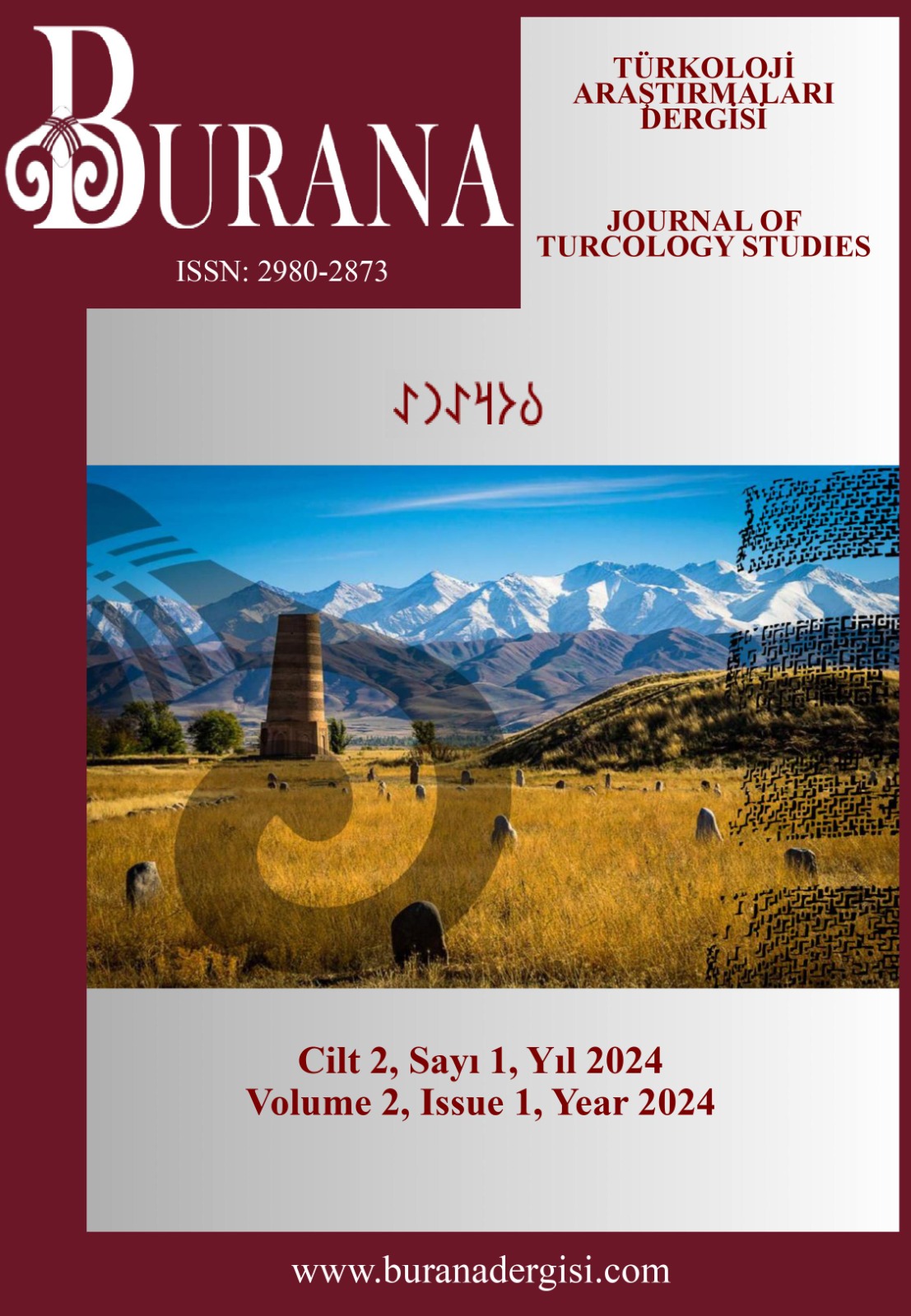A Bibliographic Essay on Turks of Eraq-e Ajam
DOI:
https://doi.org/10.5281/zenodo.12626988Аннотация
During the Seljuk Empire period, the central region of Iran was known as “Eraq-e Ajam” region. This area that its title was maintained until the beginning of the Pahlavi rule, has always been considered one of the most important geographical regions of Iran throughout history. Among the current provinces of Iran, 14 provinces were completely or partially in the territory of Eraq-e Ajam in different historical periods. The history of Turks settelement in this area goes back to the Ghaznavid period, and since that date, the governments of Turk descent chose the important cities of this region, such as Ray, Isfahan, Qazvin, and Hamadan as their capital, and Turks have always been one of the main residents of this area till now. Although there have been several studies on the bibliography of Iranian Turks, the evidence shows that the mentioned region was neglected by researchers. Meanwhile, as evidenced by the current research, the central region of Iran is very rich in terms of Turkish culture, language, and literature. In this research, a total of 427 works in the form of articles (121 cases), books (260 cases), and dissertations (46 cases) have been introduced in the fields of anthropology, history, linguistics, and literature. In general, regarding the number of published works, the investigated provinces and regions can be classified into three categories: strong (Hamadan, Markazi, and Qazvin provinces beside Khalajistan region), medium (Qom and Kermanshah provinces) and weak (Kurdistan, Chaharmahal and Bakhtiari, Tehran, Alborz, Isfahan, Luristan, and Ilam provinces). Considering the speed of social changes and vulnerability of Turkish language and culture in the central region of Iran, it seems so necessary to carry out specialized studies from the perspective of Turkology. Due to the fact that Turks of Central Iran remain unknown to many Turkologists, conducting systematic studies in this geographical unit can produce brilliant achievements for the world of science.
Библиографические ссылки
Ahmadvand, A. (2020). Bazshansi-ye tarikhi-ye mana va mahdude-ye estelah-e Eraq-e Ajam (ta payan-e dore-ye Ilkhanian). Pazhuheshname-ye Tarikhha-ye Mahalli-ye Iran, (17), 29-44. DOI: 10.30473/lhst.2021.7560
Alilou, S. and Nurollahi, A. (2023). Zarrabkhaneha-ye Jebal ya Pahle dar dore-ye pasa-Sasani. Faslname-ye Motaleat-e Ilamshenasi, (27), 1-67.
Bayat, S. H. (2008). Sibi miyan-e do ayene (negahi be tarikh-e Torkan va adabiyat-e Torki dar Iran be bahane-ye chap-e jeld-e nakhost-e divan-e Hakim Tilim Khan-e Savei). A. Amiri (Red.). Yadname-ye Hakim Tilim Khan (məqalələr və mərasimlər) (p. 162-224). Qom: Daftar-e Nashr-e Navid-e Eslam.
Bayhaqi, A. (1977). Tarikh-e bayhaqi. Daneshgah-e Ferdowsi Mashhad.
Bicbabaei, B. (2012a). İran Türkolojisi üzerine bir bibliyografya denemesi: tezler. Modern Türklük Araştırmaları Dergisi, (2), 119-143. DOI: 10.1501/MTAD.9.2012.2.17
Bicbabaei, B. (2012b). İran Türkolojisi üzerine bir bibliyografya denemesi: kitaplar. Modern Türklük Araştırmaları Dergisi, (4), 185-197. DOI: 10.1501/MTAD.9.2012.4.44
Dolati Darabadi, M. (2021). İran Türk lehçeleri üzerine bir bibliyografya denemesi. Uluslararası Türk Lehçe Araştırmaları Dergisi, (1), 204-228. DOI: 10.30563/turklad.899333
Ibn al-Athir. (1992). Tarikh-e kamel 2. (A. Halat Translated.). Moassese-ye Matbuati-ye Elmi.
Ibn Khaldun. (1989). Tarikh-e Ibn-e Khaldun (al-Ebar). Motaleat va Tahghighat-e Farhangi.
Kamali, A. (1982). Mehdi Montəzer. Varlıq, (41-42), 81-87.
Kamali, A. (1983). Dərgəzinli Molla Əhməd. Varlıq, (51-52), 78-87.
Kamali, A. (1986). Kosər. Varlıq, )88-89-90(, 75-83.
Kiepert, H. (1883). Nouvelle carte generale des provinces asiatiques de L’empire Ottoman. Dietrich Reimer.
Lestrange G. (1998). Joghrafiya-ye tarikhi-ye sarzaminha-ye khelafat-e sharghi. (M. Erfan Translated.). Elmi va Farhangi.
Momeni, M., Kajbaf, A. A. and Allahyari, F. (2013). Mahiyyat-e Torkamanan-e Araqi va rabete-ye anan ba Torkamanan-e Saljughi. Pazhuheshha-ye Tarikhi, (2), 19-36.
Motavali, A., Jiriyaei, M. and Hasanbeigi, M. (2023). Negahi be faaliyatha-ye ejtemai va farhangi-ye tojjar-e Soltanabad az Mashrute ta payan-e Pahlavi-ye avval. Ganjine-ye Asnad, (2), 60-87. DOI: 10.22108/JHR.2018.106517.1228
Nehchiri, A. (1991). Joghrafiya-ye tarikhi-ye shahrha. Entesharat-e Madrese.
Shamil, A. (2011, Aralık 22-24). Orta İran Türkçesinin ortak dil özellikleri [Sözlü Sunum]. IV. Uluslararası Dünya Dili Türkçe Sempozyumu, Muğla Üniversitesi.
Sharafi Safa, H. and Changizi Ardahaei, E. (2020). Joghrafiya-ye tarikhi-ye A’lam dar dore-ye Eslami (az aghaz ta zohur-e Ilkhanan). Pazhuheshname-ye Tarikhha-ye Mahalli-ye Iran, (16), 45-60. DOI: https://doi.org/10.30473/lhst.2020.7047
URL-1: Encyclopædia Iranica. Retrieved on 23 May 2024 from https://www.iranicaonline.org/articles/jebal
URL-2: Geographicus. Retrieved on 22 May 2024 from https://www.geographicus.com/P/AntiqueMap/RegnumPersicum-ottens-1730
Vakili Tabrizi, R. (2016). Tarikh-e Araq (Soltanabad-e Araq, Arak). Ayandegan.
Загрузки
Опубликован
Как цитировать
Выпуск
Раздел
Лицензия
Copyright (c) 2024 БУРАНА - Журнал тюркологических исследований

Это произведение доступно по лицензии Creative Commons «Attribution» («Атрибуция») 4.0 Всемирная.


